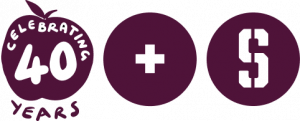Subject, perspective, composition, medium, colour palette, framing, tools… these are some of the things that come to mind when I think about approaching the start of a painting. But if I said this was a list of considerations attached to creating a poem, I think it would still stand. For framing, read form; for colour palette, read language and imagery; for tools, read poetic devices.
I get asked a lot about the relationship between poetry and painting – if and how the two cross over, why I’m drawn to both.
Having worked with both artforms for most of my life, I feel I should have a succinct and profound response to offer. But I don’t. Instead, what usually follows is some thinking out loud with the absence of any neat conclusion. Which would not be an inaccurate description of either artform, come to think of it. One thing I do feel sure of though is that there is something shared between the two that draws me to both, and that link is more than an interchangeable list of technical choices to be made or ignored.
It can be no coincidence that many painters are also poets or great readers of poetry, and vice versa. 2019 saw an extensive exhibition of William Blake’s artwork at Tate Britain; Tracey Emin’s exhibitions are rarely devoid of her famous neon statements, poetic titles scrawled across the bottoms of her canvases, pages of handwritten letters and stories; David Hockney is well-known for taking inspiration from poets such as Walt Whitman and Wallace Stevens. The list goes on. And it begs the question, what about these two artforms means they so often appeal to the same mind?
When I recall the exhibitions and poetry collections that have stayed with me most in recent years, it’s not the individual pieces of work that first come to mind but the feelings they evoked in me. Marlene Dumas’ The Image as Burden at Tate Modern, I’m now shocked to realise took place way back in 2015. This surprises me not because of the somewhat terrifying speed at which time has passed, but because of how frequently I still recall it and how alive my reaction to it continues to feel. I can say the same for Emin’s A Fortnight of Tears (2019) at White Cube. I made three visits and cried each time. As I write this, I’m reminded of the wonderful Maya Angelou quote:
‘I’ve learned that people will forget what you said, people will forget what you did, but people will never forget how you made them feel.’ (Maya Angelou)
It’s beyond question for me that for many more years to come I will continue to recall these exhibitions and their paintings for how they made me feel. And I have the same deep sense of attachment when I think of Mary Jean Chan’s poetry collection Flèche, Sylvia Plath’s Arial, Ella Frears’ Shine, Darling, Seamus Heaney’s North…
On the walls of the Dumas exhibition, alongside the works of art, were short pieces of text, statements about the paintings written by Dumas herself. One such statement read:
I would like my paintings to be like poems. Poems are like sentences that have taken their clothes off. […] Poetry is writing that breathes and makes jumps and leaves spaces open, so we can read between the lines. (tate.org.uk)
It’s this ability to create space and hold it open that is, in no small part, what draws me to both poetry and painting. There is a sense that the artwork does not only exist in what is presented but also in what is not, that it transcends the page/canvas and continues somewhere beyond, somewhere just out of sight but not out of reach of feeling.
It strikes me that the artforms’ shared ability to create this sense of another dimension perhaps lies in the shared nature of their languages, one that is highly visual and economical. It’s here that the power of suggestion and, in turn, imagination come to the forefront and, thus, the poem/painting remains open; the reader/viewer is invited to move within it, fully experiencing it for themselves.
In this way – as Dumas said, through leaving space ‘so we can read between the lines’ – both artforms discourage their audiences from being passive bystanders. The poem/painting is a door left ajar, an open invitation to step through, and go to work finding something more. Exactly what is found is nuanced by whoever comes to it, by their imagination and lived experience of the world in which we each exist. In this sense, poems and paintings are also living things, forever shifting and evolving, and, as such, they are always surprising; entire movies disguised as stills.
For as long as I can remember, I have found a sense of home by stepping through the countless doors that poems and paintings have offered. Not necessarily the archetypal home of comfort and shelter, but a place of recognition, of connection to something human that surpasses language in the literal sense, written or visual. I find that it is here, in this place, that the experience becomes bodily and the poem/painting can be felt.
 Alice Frecknall is a poet, short fiction writer, and fine artist. Her debut poetry collection Somewhere Something is Burning is published by Out-Spoken Press (2021), and available to order here.
Alice Frecknall is a poet, short fiction writer, and fine artist. Her debut poetry collection Somewhere Something is Burning is published by Out-Spoken Press (2021), and available to order here.
Her writing was shortlisted for the Out-Spoken Prize for Poetry 2019 and the Lightship International Short Story Prize. Her work has been published online by Out-Spoken and has appeared in print in a number of anthologies, including The Stinging Fly, Butcher’s Dog, National Poetry Anthology, and Lightship Anthology. Alice has an MA in Creative Writing, is a Roundhouse Poetry Collective alumna, and member of the UniSlam Post-Emerging Cohort.
Insta / Twitter: @alice_frecknall
Photo credit: Suzi Corker
